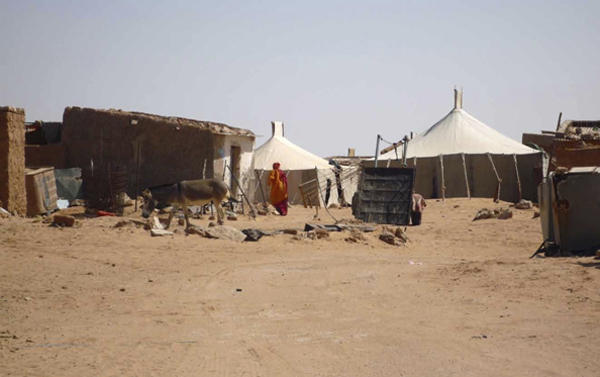LIVING

Student: Franziska Biner
Thirty-six years have passed, since the first refugees arrived in Tindouf, Algeria. Ever since, about half of the Western Sahara’s native people have been living in these refugee camps. Until the UN negotiated a cease-fire in 1991, they had been fighting for their country’s independence. Organizing a life in a stage where the hope that today is the day when you can go home is present all the time, is difficult. Living with the thought of being in the camp just for a temporary period doesn’t help to establish an economic independent society. Every day they live with the contrariness of making their live in the camps comfortable without striking roots.
The second generation who has never seen the Western Sahara has already been born. Some of the people start building houses that are designed and decorated.These houses don’t even include tents anymore.Tents are the strongest sign of temporary living. Is there a generation growing without the aim of going back to the Western Sahara? Do some of the refugees want to settle down in the camps? What happens when the elders are passed away and no one remembers the life in the Western Sahara anymore? Do the camps become permanent? Aren’t they permanent already?
These are general questions that are of interest when going to the camps. All of them have an affect on the way of living in the camps. The aim of the research is to find answers, not general ones, but also answers concerning the urban development.These people live in tents and brick houses. What is the reason of the existence of both? What kind of living space is being developed? Are there ‘neighbourhoods’ which are more or less preferred? How do the refugees claim land and how do they build on it? Is there something like a market? The camps are autonomic. That is unique amongst all refugee camps in the world. Does this mean that these camps can be considered a model for other camps?
Download the chapter PDF

